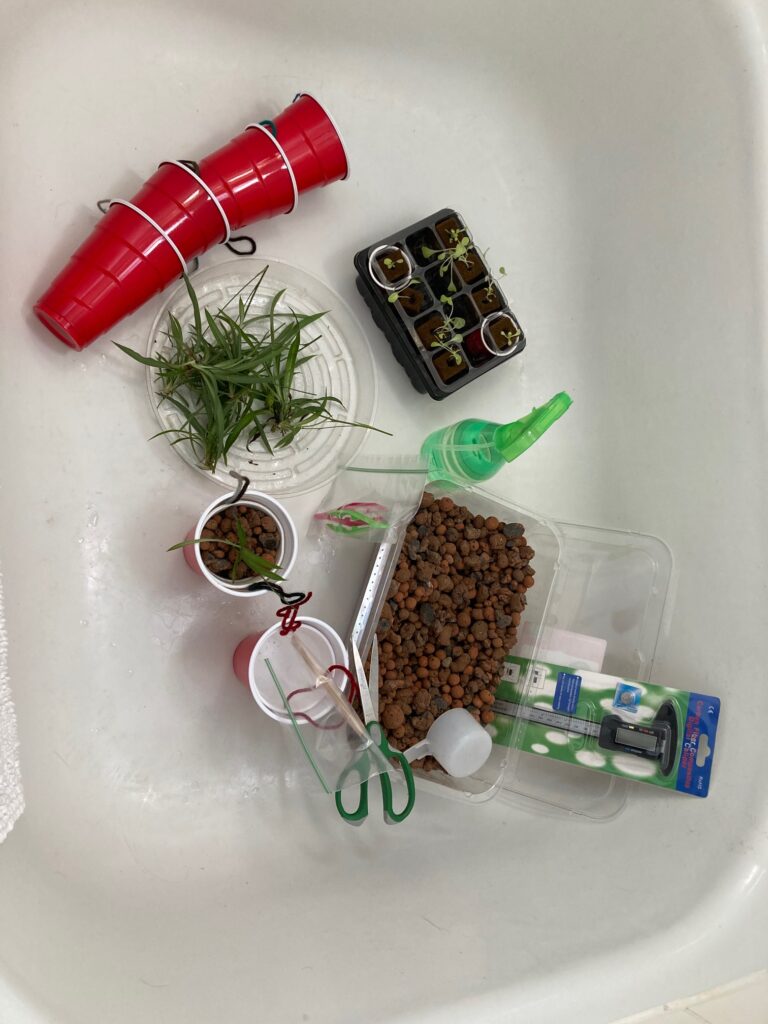
What happens when a seedling is damaged intentionally? This blog shows what happened to the 12 seedlings chosen for Lesson 2: Activity 1 – How do plants grow? Here we find find out how different types of physical injuries affect plant growth. Below is a quick summary of my results based on running this activity at home for thirty days.
I chose Chlorophytum comosum (spider plants) for my monocot plant sample and Lactuca sativa ‘Black Seeded Simpson’ for my dicot plant sample. I chose these samples out of convenience. I was growing Black Seeded Simpson lettuce in my hydroponic system and had a spider plant with more than enough shoots to run the test with six samples.
The two figures below describe the invasive actions taken for the five samples with a sixth sample added as a control. The same invasive actions were taken for the dicot and monocot seedlings. The pictures and brief description summarize my results for each action for each plant type.


What happened?
As you can see the results are not the same for the two plant types. Let’s look more closely to see what happened for each plant type in response to the five different invasive actions.
Using a different setup for the dicot plants makes the findings incomparable across the two plant types. While we can’t compare findings across the two plant types, we can describe the results from each group as if they were separate investigations. We can also document what we learned about the limitations of the dicot seedling set up, which will be useful in Lesson 4 – Activity 2 that investigates plant substrates.
At the end of the thirty days, we see that all of the dicot plants died. It appears that the media system in which they were placed did not support the plant needs for water. Dicot Sample A1 nearly survived because it was given what was considered to be “too much water.” Comparatively, the monocot Sample B1 (given “too much water”) showed slower growth than the three other fastest growing monocot samples.
While none of the monocot samples died, samples B1, B2, and B5 showed slower growth and were less healthy at the end of the 30-day test. For monocot Sample B5, the yellowing of lower leaves, brown discoloration on the leaf tips, and overall wilted appearance of the plant may indicate phytophthora root and stem rot, which the seedling may have been more susceptible to because of cutting the plant roots. The meristem cells in the roots may have been damaged, disabling the growth and production of new root cells.
The wilted appearance and slow growth shown in monocot seedling B2 may similarly be a result of damage to the meristem cells located in the plant growing tip of the plant. The slower plant growth shown in monocot samples B2 and B5 suggest the importance of meristem cells in helping plants recover and rejuvenate new cells in response to physical damage. When the meristem cells are damaged, the plant is less able to bounce back and sustain normal growth.
